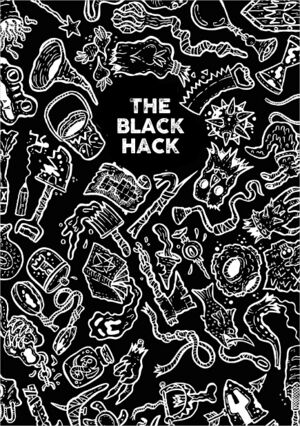The Black Hack: Difference between revisions
Added retroclones template |
|||
| Line 21: | Line 21: | ||
The game borrow the advantage/disadvantage rule from D&D 5th. When you have an advantage on a test, roll 2d20 and keep the lowest as your result. When you have a disadvantage on a test, roll 2d20 and keep the highest as your result. | The game borrow the advantage/disadvantage rule from D&D 5th. When you have an advantage on a test, roll 2d20 and keep the lowest as your result. When you have a disadvantage on a test, roll 2d20 and keep the highest as your result. | ||
{{Retroclones}} | |||
Revision as of 21:38, 5 May 2021
| The Black Hack | ||
|---|---|---|
 |
||
| RPG | ||
| Authors | David Black | |
The Black Hack is a retroclone of the first edition of Dungeons & Dragons. The rules are under the OGL and can be found here.
Core Mechanics
Stat checks
All rolls are roll-under, meaning you have to roll below your stat on a d20 (the only exception to this rule are damage rolls). NPCs never roll. For example, if a monster attack, the attacked player can do a Strength or Dexterity roll to avoid the attack, but the monster itself doesn't roll (once again, the only exception to this rule are damage rolls).
There is no saving throw. Instead, a stat check is rolled depending on the nature of the danger.
Advantage & Disadvantage
The game borrow the advantage/disadvantage rule from D&D 5th. When you have an advantage on a test, roll 2d20 and keep the lowest as your result. When you have a disadvantage on a test, roll 2d20 and keep the highest as your result.